Rare Big Brother Steiff 5xJointed Teddy Panda Bear 1951 To 1961 Free U.S. Shipping
$358.00 Original price was: $358.00.$99.99Current price is: $99.99.
- Quality You Can Count On
- 100% High-Quality Guarantee
- 7 days free returns
- We take quality seriously.

I believe the catalogued size of this handsome boy was 50 centimeters. He is less than that number in height; his actual height to the top of his head is about 46.5 centimeters or just over 18 inches. The two past (and only other) panda teddies I have sold were less than the catalogued size I assigned to them (43 cm for both). I believe, as is so often the case with Steiff animals, that these bears run small.
If my conclusion as to Panda’s “official” size is correct, his article number was 5350,2 or 5350,00. The entire production of these pandas was between 1951 and 1961. Because Panda’s paw and foot pads are made from a gray, suede-like, material, which I believe is rubber, I believe he was made in 1956 or later. The earliest jointed pandas’ pads were made of felt.
Panda’s paw and foot pads could have been given to him during either series, so he could have had either article number on his flag. Alas, Panda no longer has his flag, nor his button. While his having some form of ID would be nice, of course, there is absolutely no question about his Steiff identity.
There are many animals in my own collection without IDs, and in fact, on many occasions I have obtained a second instance of a particular animal with ID, intending to keep it and sell my first-acquired version. But instead, I have often KEPT my original because I thought it was nicer; its lack of ID was not an issue.
If having a button is an essential thing for an animal in your collection, you may be missing out. Who knows when another 50-cm jointed panda will come on the scene, or what condition it will be in—even if it has a button?
Enough background. Assuming you have not stopped reading, I will tell you about Panda. I would say that he is in good-plus condition, only holding back from “very good” or “excellent” because he has more than one issue—all MINOR.
Panda has essentially full mohair coverage, but there are tiny thinning sections of his black mohair where you can see the fabric below. The reason you can see it is that it is a bit lighter than the black (actually purplish). Two places where you can see this thinning are on his ears and on his left paw. Because the mohair in those areas is longer, you can easily brush it over the thinner areas to camouflage them.
Panda has slight thinning of a different kind on the edges of his feet, which are covered with close-cut mohair, like what you typically see on Steiff animals. I am showing you two segments—one from each foot—in my seventh composite image, just to give you an idea of how minor these thin segments of thinning on the edges of both feet.
The thinning goes completely around each foot, but there was no reason to show it all to you; this thin line of thinning is not even as noticeable along other areas of each of Panda’s flat feet, and I think my enlarged images give you the most important visual information. I believe the thinning comes from the stress of the tiny little (virtually invisible) stitches that connect the foot pads to the tops of Panda’s feet. In fact, when I first looked at the pads, I thought they were attached with glue. I only realized they were sewn on because there are several missing stitches on the edge of Panda’s left foot (right as you look at him).
I am showing you the teeny/tiny missing-stitch holes with my blue double arrow, and while, technically, that tiny segment of the circumference of Panda’s foot is not attached to the top, there is no noticeable “gap” or open area.
Still talking about Panda’s black areas, I do want to mention his eyes. The black surrounding each eye may have been a little darker originally, but not by very much. And the black strip across his back always looked the way you see it now; it is not supposed to be a dense, solid black like the rest of him.
Speaking of the rest of Panda’s black hair, even though the underlying fabric appears purplish, Panda’s mohair is midnight black, and I am sure it looks just as it did when he left Giengen 60-ish years ago. I believe his white mohair is also not much different from the way it looked originally. I don’t think it was ever SNOW white, and if it has darkened at all, it is not by much.
I had all kinds of problems with my lighting when I photographed Panda, and one was accurately showing his white areas. Because his mohair is wonderfully lustrous, that complicated showing it properly lighted. And the fact that in each picture I had to combine lighting Panda’s two OPPOSITE colors, I think what you see is somewhat of a compromise.
Continuing with my nitpicking, the inside of Panda’s happy open mouth is felt. It appears to be ever so slightly worn—not with any open holes, but it looks a little thinner in the front of his lower palate. I say that because you can detect something darker below the felt. I guess that darker area could be a bit of soil too, but I did not want to investigate it any further by attempting to clean it (if it is not dirty) and possibly make the situation worse. In any case, in addition to this thinner-seeming area, the color of the felt is a little faded from the ripe cantaloupe color it once was. What you can’t really more than a hint of in any if my images, is the fairly large remaining rose-colored air brushing that remains further back inside Panda’s mouth.
Panda’s ribbon is my contribution to his nice look. He came with another substitute ribbon that I was happy to replace! The color of the ribbon, too, was hard to capture. I think my second image, where he is facing front, is the closest to the way it looks in person. It is a darkish red with a tiny hint of blue. My source tells me it is French and from the 1940s or earlier, not quite “antique” by Ruby Lane’s standards, but close enough. 🙂
Finally, although you would not know this if you place Panda on display and admire him from a distance, he does have a sometimes-working tilt-growler, or “Brummstimme” in German.
I can’t think of anything else to tell you, but please write if you have a question. This is a special bear for the advanced collector, and while you are considering him, please check out his tiny sister, also available for adoption.
WHATEVER YOU DECIDE TO DO ABOUT PANDA OR ANY OF MY OTHER STEIFF ITEMS, PLEASE BE SURE TO SEE THE ARTICLE I HAVE WRITTEN ABOUT STEIFF ID FRAUD—INCLUDING COUNTERFEIT CHEST TAGS—(AND OTHER IMPORTANT INFORMATION FOR COLLECTORS). YOU WILL FIND THE LINK ON THE BOTTOM RIGHT OF MY SHOP HOME PAGE UNDER “FAVORITE LINKS.” IF YOU HAVE NOT LOOKED AT IT RECENTLY, I UPDATED AND EXPANDED IT IN MARCH, 2023.
| ITEM ID | rl-2857 |
|---|---|
| COLOR | Black, White |
| ITEM TYPE | Vintage |
| FINE PLUSH AGE | Post 1950 |
Be the first to review “Rare Big Brother Steiff 5xJointed Teddy Panda Bear 1951 To 1961 Free U.S. Shipping” Cancel reply
Related products
Dolls
Rare HUGE Unusual Steiff Display Animal Schautier Baby Wild Boar Frischling ID Free US Shipping



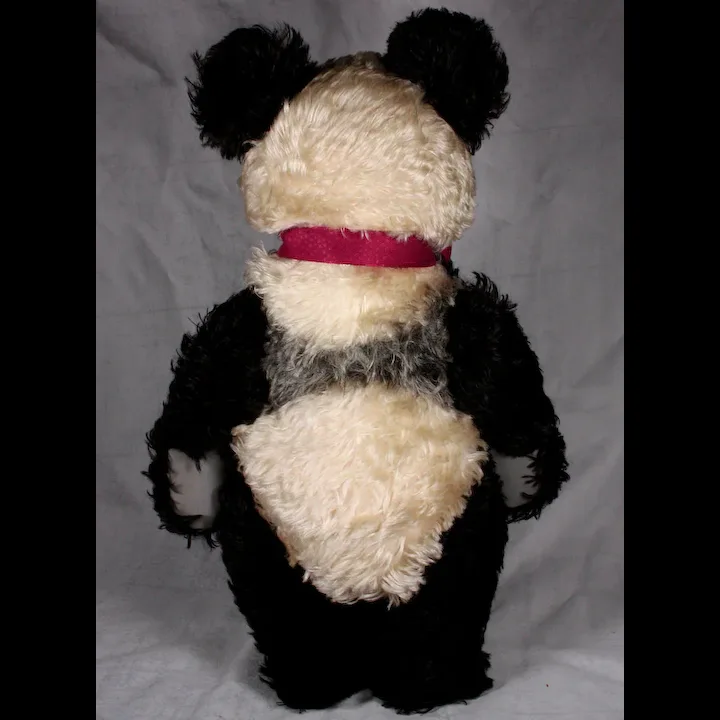
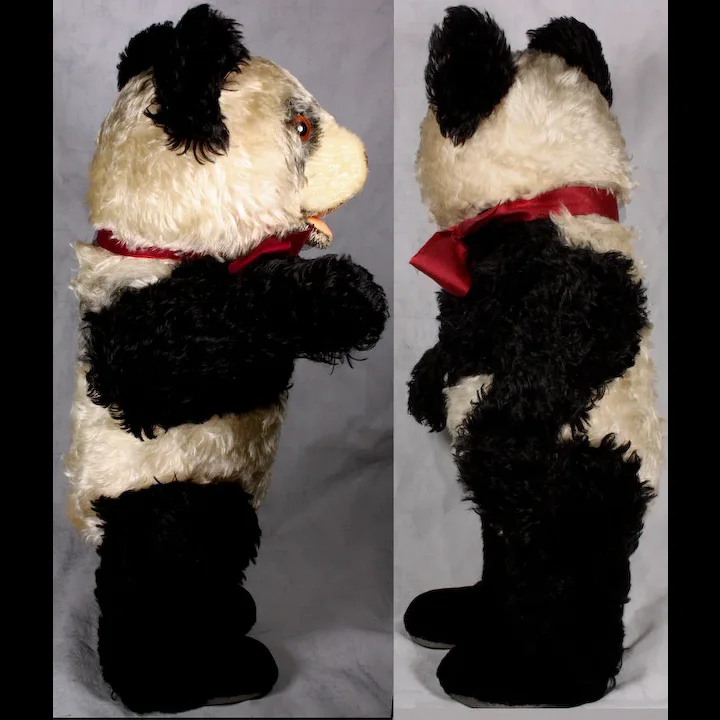

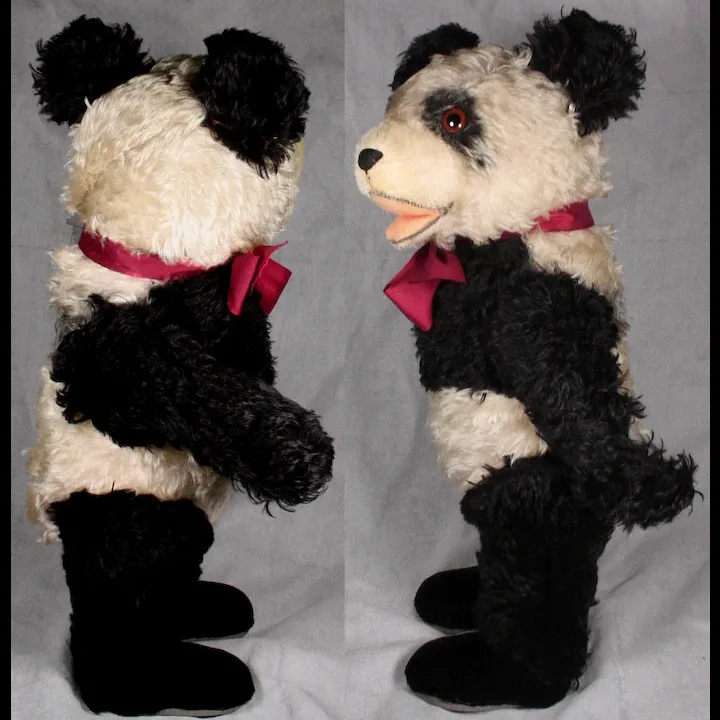




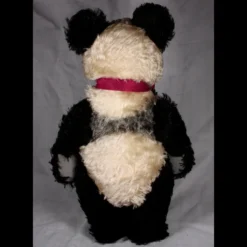
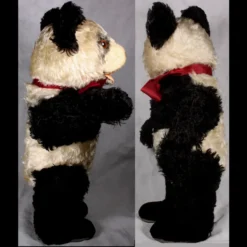




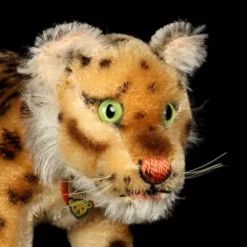


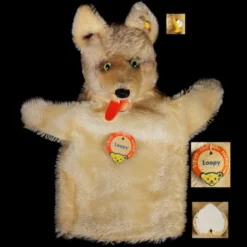





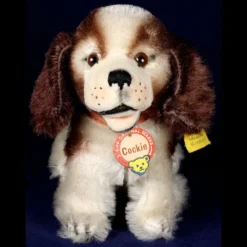
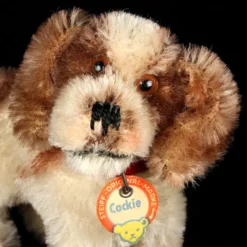
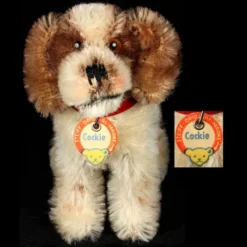

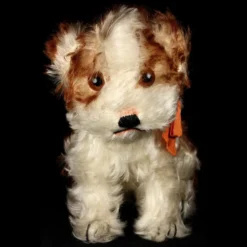

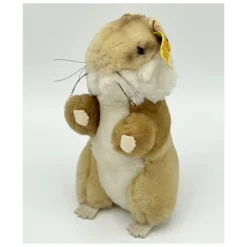
Reviews
There are no reviews yet.